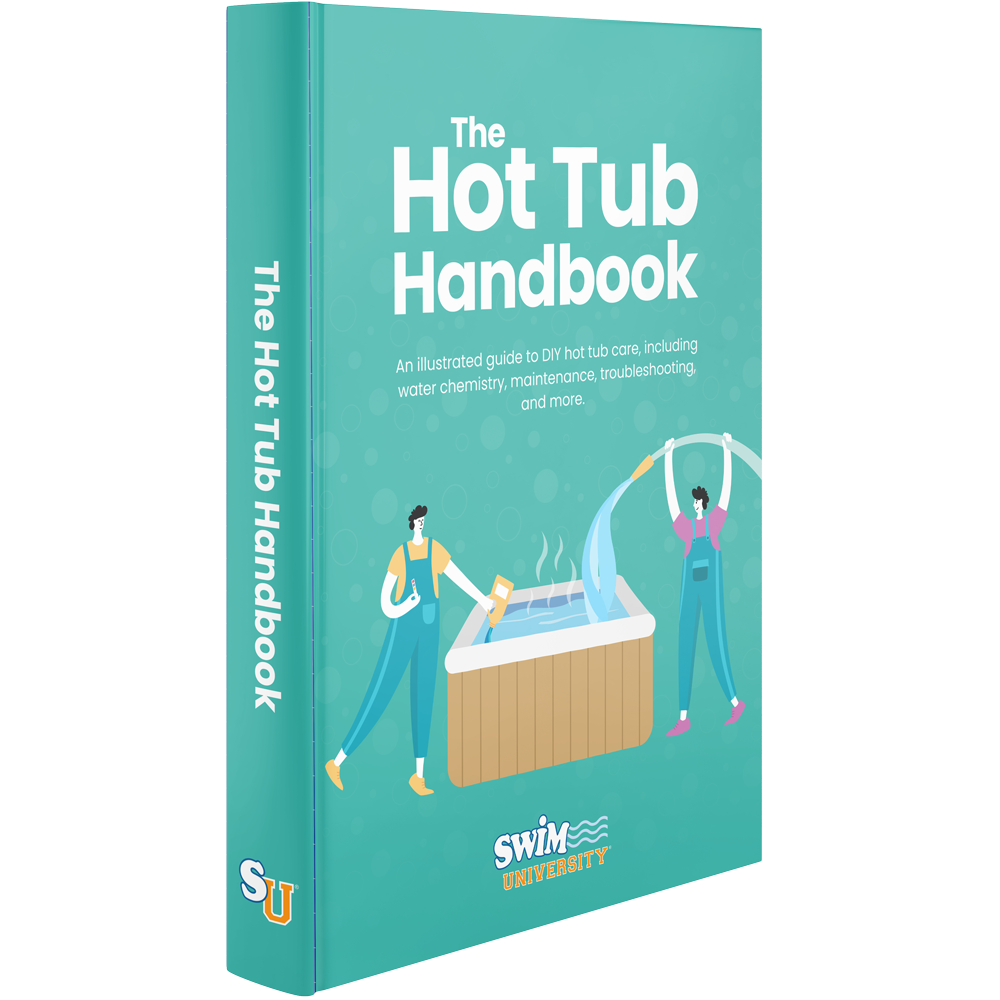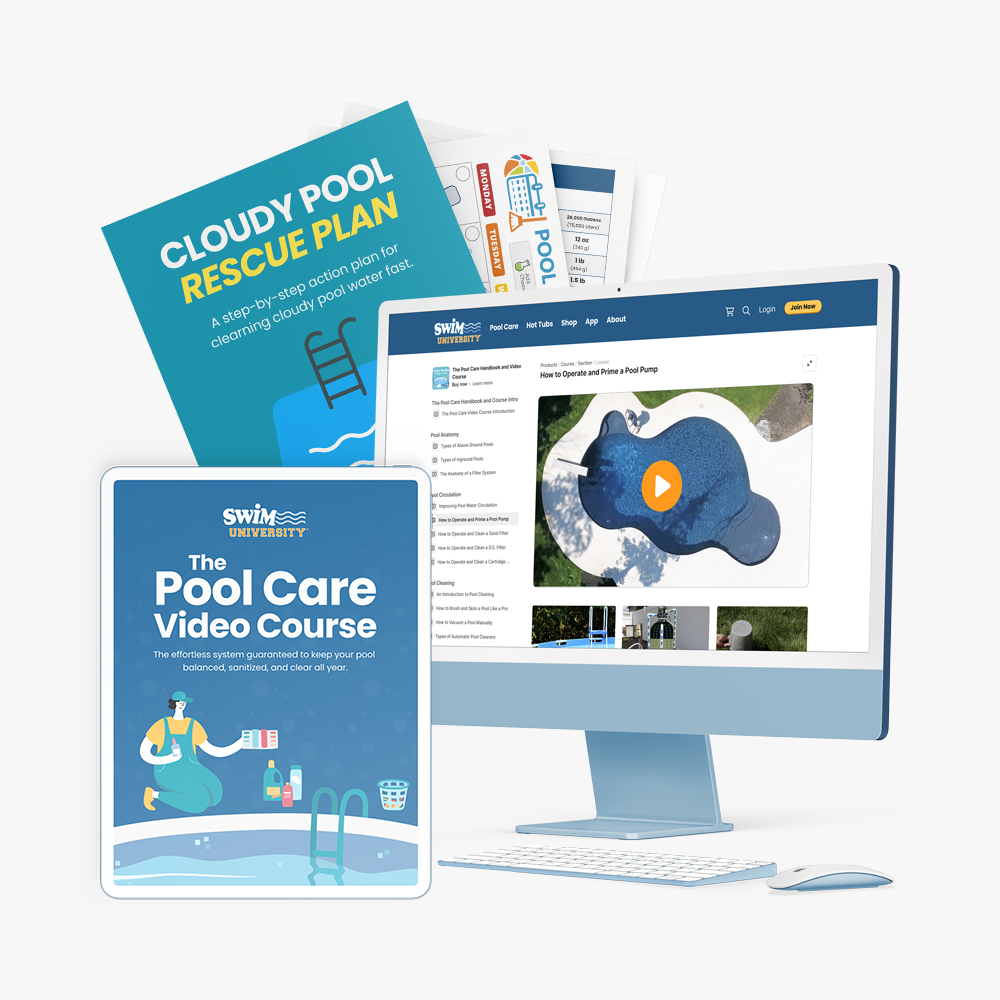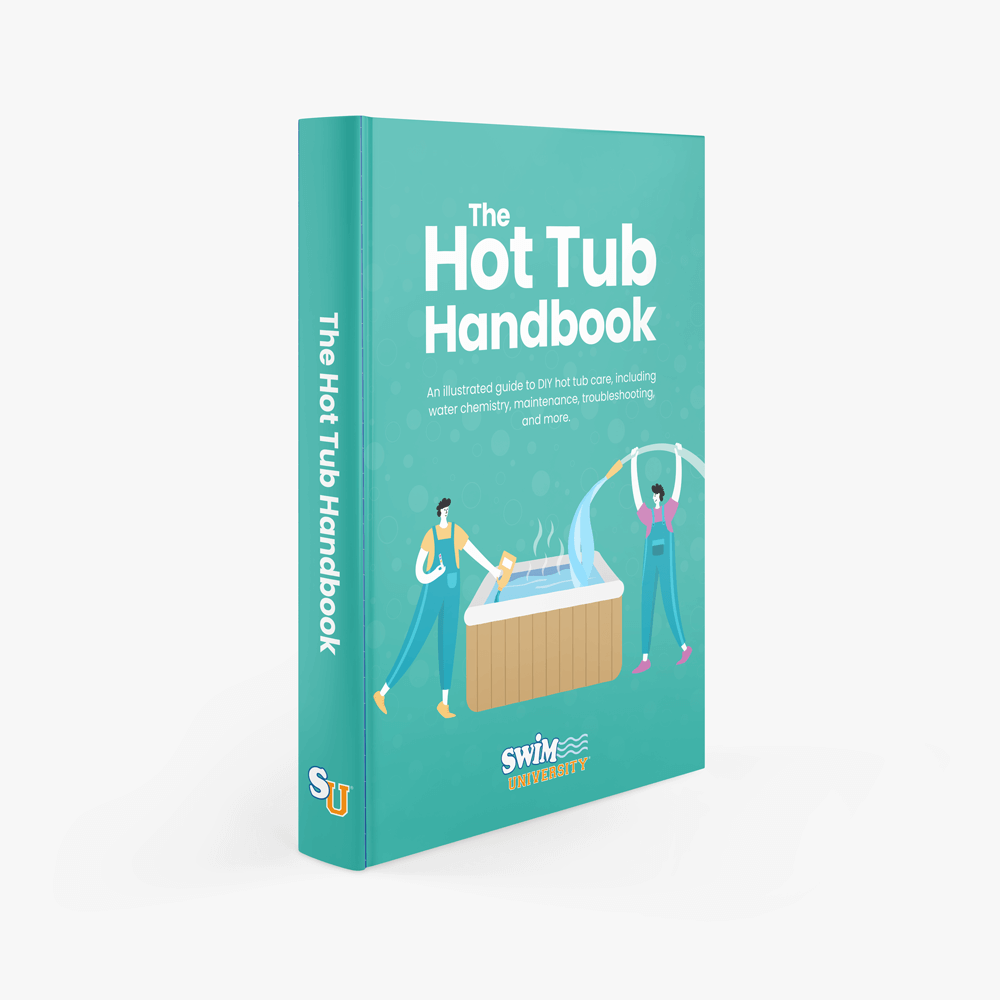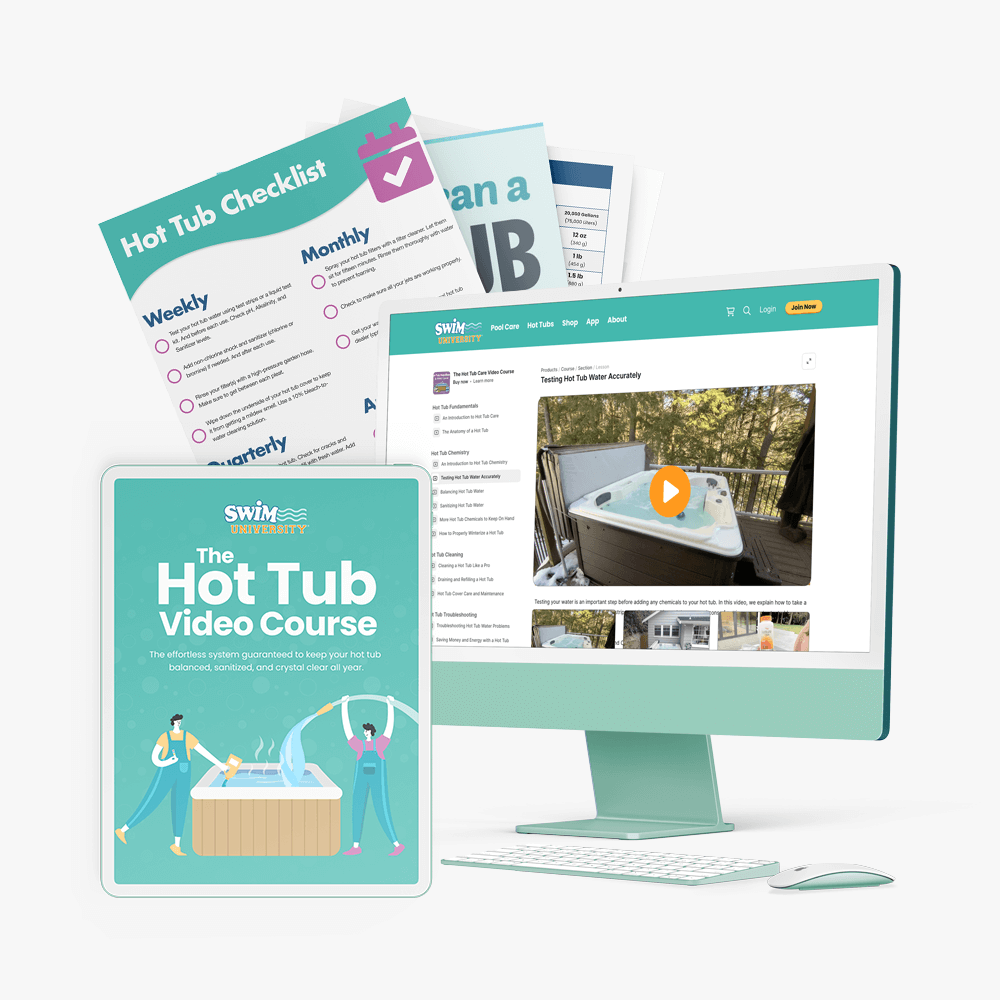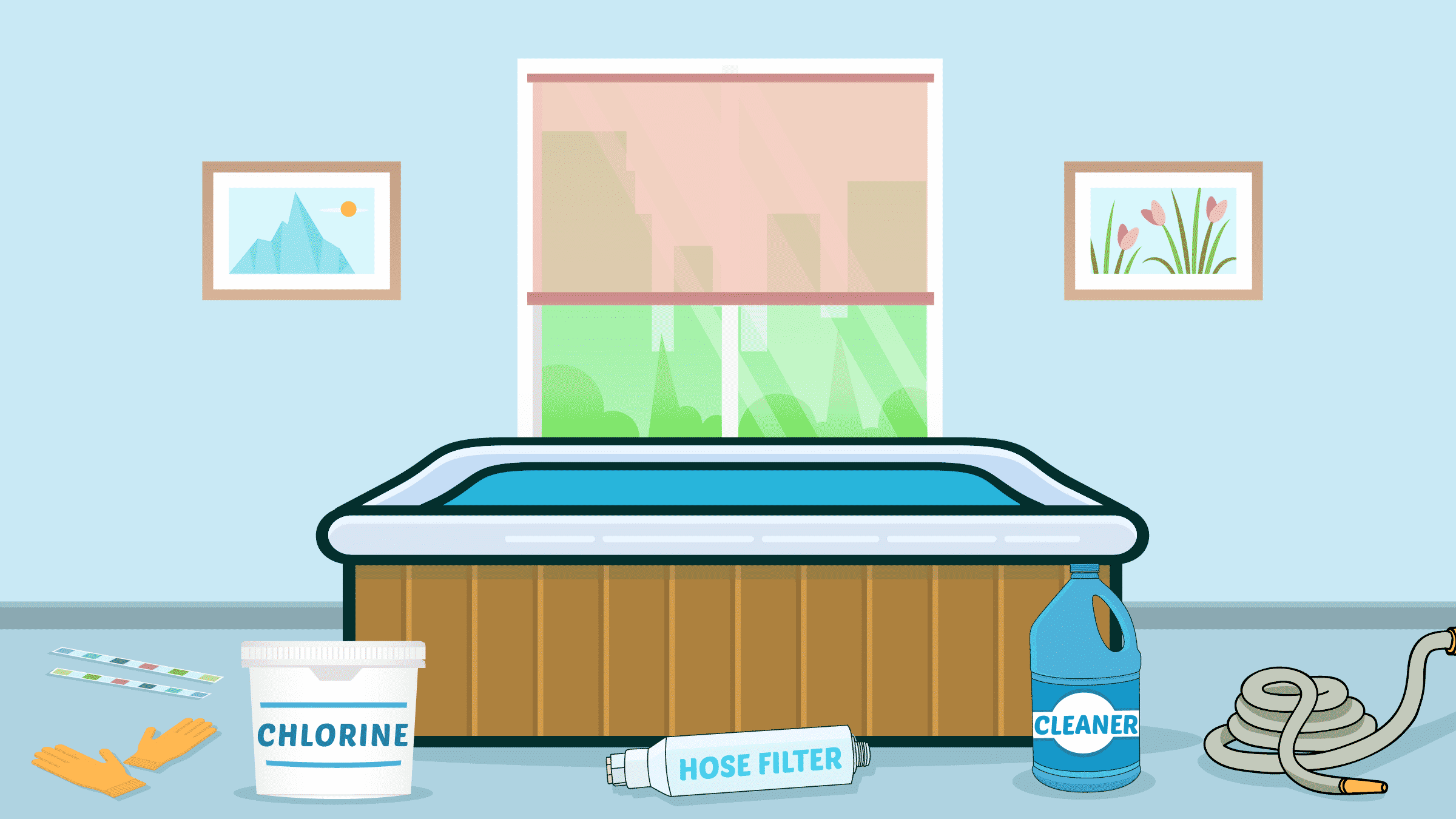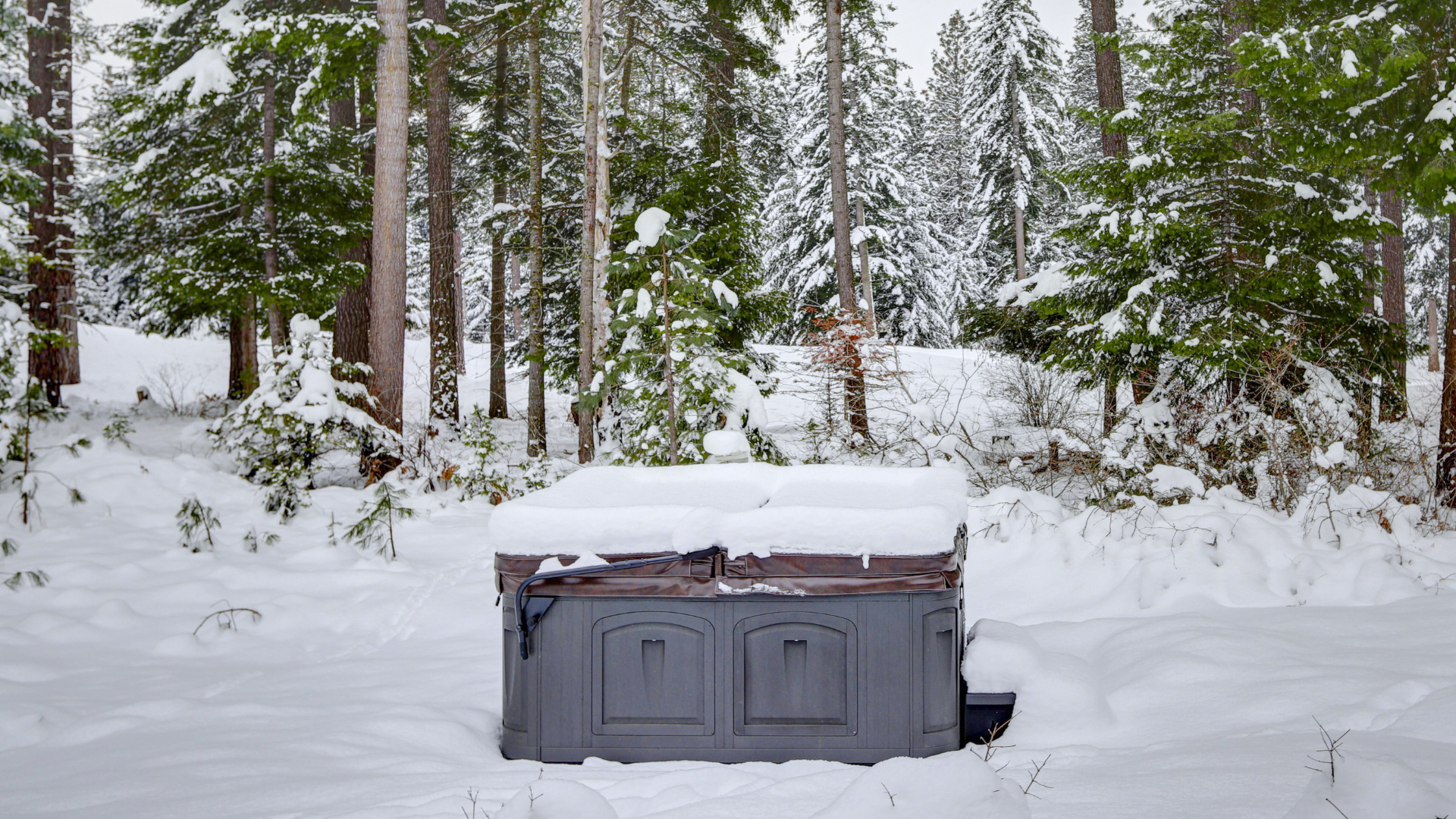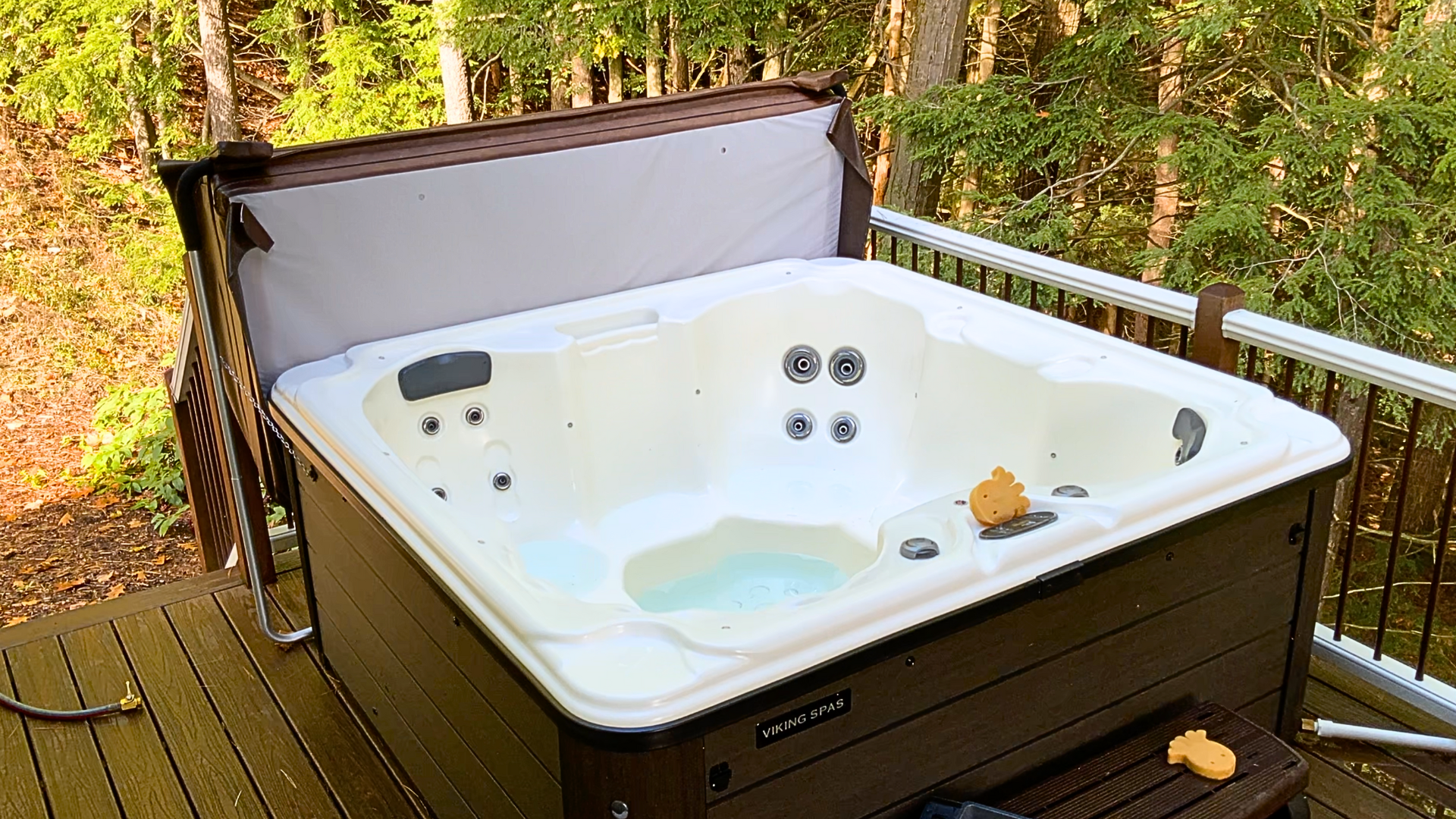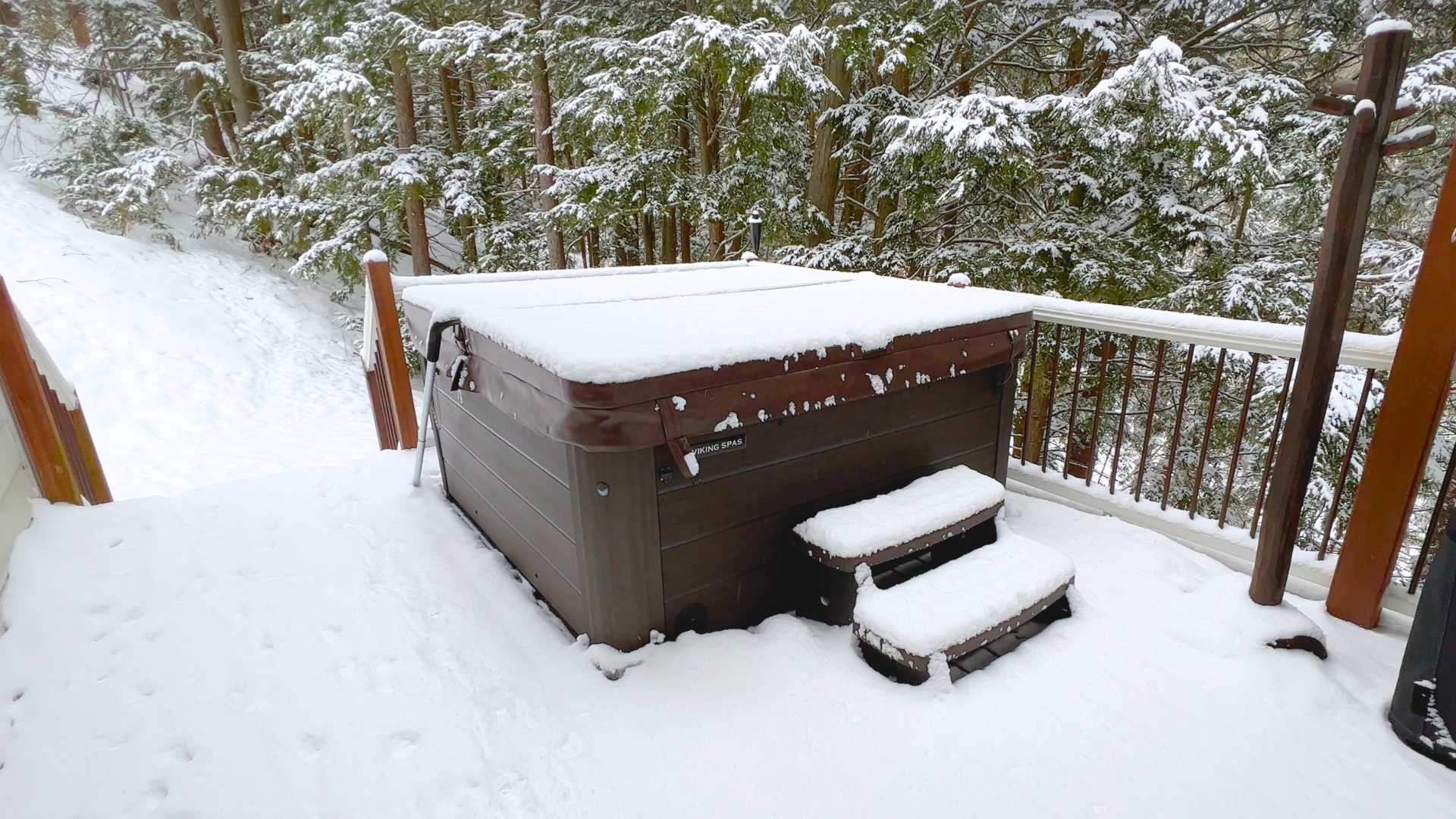How to Safely Fill a Hot Tub in Cold Winter Weather
Filling a hot tub in winter requires careful preparation to prevent freeze damage to your plumbing and equipment. If water freezes during the filling process, it can crack pipes and cause thousands of dollars in damage that warranties typically won’t cover. And unfortunately, filling a hot tub with hot or boiling water can damage the heater or surfaces, potentially voiding your warranty.
The key to filling your hot tub in cold weather is proper preparation and the right weather conditions.
Learn how to keep your hot tub clear while saving money so you can enjoy more soaking time without big costs. The Hot Tub Handbook covers every type of hot tub on earth.
How Cold Is Too Cold to Fill a Hot Tub in Winter?
The ideal outside temperature for filling is when temperatures are consistently above 40°F (4°C). This buffer prevents any freezing risk during the several hours it takes to complete the entire process.
Filling a hot tub that’s been sitting outside in freezing temperatures is risky. If there’s any residual wetness inside the pumps, the impellers (i.e., the rotating part of your pump) could be frozen and stuck. Stuck impellers can blow the pump fuses.
In extremely cold weather, you run the risk of flash freezing when filling your hot tub. Water will flash-freeze on contact with plastic or metal parts when the temperature is below 10°F (-12°C).
If you can’t wait for warmer weather to fill your spa, put a small electric space heater inside the spa cabinet. Monitor the space heater for the next 8-10 hours as it pre-warms the plumbing. This will prevent flash freezing and loosen any frozen spa components. Do not leave a space heater unmonitored.
Plan to fill and heat your hot tub as quickly as possible in freezing temperatures. Moving water doesn’t freeze as quickly, so running water from the hose won’t freeze in the time it takes to fill up your hot tub.
How to Fill a Hot Tub Without an Outside Hose
If your hose or outdoor spigot is winterized or frozen, you can fill your hot tub from inside the house. Use a flexible garden hose with a faucet adapter to connect to a utility faucet, bathroom faucet, or kitchen faucet. Remove the screen from your kitchen faucet before attaching the adapter.
This garden hose features all-weather flexibility and an abrasion-resistant outer cover with crush-resistant anodized aircraft aluminum fittings, making it extremely durable.
As you fill your spa, check that the water isn’t extremely hot, since the thermal shock of hot water can warp or crack the spa shell.
You can also use buckets to fill your spa. Keep in mind that this requires a lot of time and physical labor. A typical 300-gallon hot tub (1,136 liters) would require 60 trips with a five-gallon (19-liter) bucket.
Avoid using water from your home’s water heater to fill your hot tub. The water comes out too hot, and connecting a hose to the sediment drain on your water heater can introduce sediment into your hot tub.
Can I Fill My Hot Tub with Hot or Boiling Water?
Never use extremely hot or boiling water to fill your hot tub. The spa shell and plastic components can warp or crack from the thermal shock, and uneven temperatures can cause issues with your temperature sensors. Adding boiling water can also void your warranty. Fill with water that’s around 60°F (16°C), which is closer to the temperature of the shell, and let the heater gradually bring everything up to temperature evenly.
How to Fill Your Hot Tub in Winter (5 Steps)
Start by checking that all your equipment is properly connected and closed. Close all your drain valves, tighten any unions or quick-disconnect fittings on your pump and heater, and move all gate valves to the up or open position.
How Long Does a Hot Tub Take to Fill Up?
A hot tub typically takes one to two hours to fill with a hose, depending on the size of your spa and the strength of your water pressure. Never leave your hot tub unattended while filling because overfilling can cause water to backflow into your heater.
Step 1. Turn Off Power at the Breaker
Turn the main breaker to your hot tub off completely before you begin filling. This protects your electrical system and prevents the pump from running dry. Double-check that all jets are open. Open jets prevent trapped air in your plumbing system.
Step 2. Fill Through the Filter Well
Attach a hose filter to your hose to remove impurities, such as minerals and metals. Then, insert your hose into the filter compartment with the filter cartridge removed.
Filling through this opening helps remove trapped air from inside your plumbing. Turn on the water and let it run directly into the filter well.
Do not leave your hot tub unattended when filling. Overfilling can cause water to backflow into your heater when you start up your hot tub. Set a timer for every 15 to 20 minutes to monitor the water level, and stop filling when the water reaches one to two inches (or three to five centimeters) above the highest jet and at least halfway up the skimmer intake.
Check if your hot tub has a minimum safe water level marked inside the shell.
Add Metal Sequestrant Early
If you need to add a metal sequestrant, add it as you fill the hot tub. Once the footwell (the bottom portion where you place your feet) is full, add your metal sequestrant or stain and scale preventer. Adding it at this stage prevents any minerals or metals in your source water from settling onto your surfaces.
Step 3. Install Clean Filter Cartridges
Once the hot tub is filled, install your new or clean filter cartridge. The filter compartment is usually under a cover or lid near the skimmer intake. Carefully insert the filter cartridge and ensure it’s secured with any locking mechanism. Some hot tubs have multiple filters. If your filter cartridge is worn, torn, damaged, or more than a year old, replace it.
Step 4. Start the Hot Tub and Prime the Pump
Turn on your spa at the breaker. Then, prime the pump to remove air from your system.
Select the priming mode setting on your control panel after turning on your hot tub. This mode manually cycles through each pump while the heater is off to purge air from the plumbing.
Press the jets button and let it run for 10 to 20 seconds at low speed. Then press it again to run at high speed for another 10 to 20 seconds. Press once more to turn jets off for 10 to 20 seconds. Repeat this cycle two or three times until all air is removed and water flows normally through all jets. You should see strong, consistent water pressure from every jet.
If your hot tub doesn’t have self-priming mode or running the jets doesn’t remove the air, you’ll need to prime it manually through the bleeder valve.
Check out our guide on How to Fix a Hot Tub Air Lock, which includes instructions on using the bleeder valve, for more help.
Never run your pump for more than two minutes if it’s not filled with water or if you have air in the system. Running a dry pump can burn up the motor.
Step 4. Heat the Water
Set your hot tub temperature to your ideal temperature, usually between 98°F and 102°F (36°C and 38°C). The water will take anywhere from four to twelve hours to heat completely, and covering the hot tub helps the water heat faster.. This depends on the ambient outside temperature and the size of your hot tub. Colder winter air means longer heating times.
Let the water heat to at least 80°F (27°C) before adding chemicals. Chemicals dissolve and circulate better in warmer water.
Step 5. Add Chemicals
Run the jets on low with air valves off. Let each chemical circulate for 20 minutes before adding the next one. Movement from the jets helps chemicals mix without raising your pH too much.
Retest your water after adding each chemical to ensure levels are moving in the right direction. Wait at least 20 minutes between adding different chemicals to give each chemical time to dissolve and dissipate.
After setting the temperature and adding your chemicals, let the water circulate for an additional 20 minutes with the cover off. Then cover your tub for the next eight to twelve hours to help raise the temperature and retain heat.
What Chemicals Do You Put in a Hot Tub When You First Fill It?
When you first fill a hot tub, add chemicals in the following order: metal sequestrant (if needed), alkalinity increaser or decreaser, pH increaser or decreaser, and then sanitizer (chlorine or bromine). Finally, add calcium hardness increaser if needed. You don’t need to add shock to a freshly filled hot tub. Wait until your sanitizer levels come into range before using your spa.For more help adding chemicals to your water, check out our guide on Hot Tub Chemicals: What You Need and How to Add Them.
Protect Your Hot Tub in Freezing Weather
If you’re filling your hot tub in freezing winter weather, take extra precautions once it’s full. Hot tubs can freeze in cold temperatures if they’re not appropriately protected:
- Keep it covered. Cover your tub securely with a well-fitting cover to prevent heat loss.
- Use your freeze protection setting. This built-in feature automatically turns on the pump when temperatures approach freezing. Monitor the water temperature to ensure it’s working correctly.
- Run the pump 24/7. If your spa does not have a freeze protection setting, run the pump on low speed 24 hours a day. You can also set it to cycle on for 15 to 20 minutes every hour to keep warm water constantly running through the pipes.
- Check your water level regularly. If the level drops below the skimmer intake, the pump and heater may shut off. Add water as needed to maintain the proper level.
For more help, check out our guide on How to Keep Your Hot Tub from Freezing.
Key Takeaways
- Fill your hot tub when temperatures consistently stay above 40°F (4°C) to prevent water from freezing during the process.
- Never add extremely hot or boiling water directly to your spa, as it can damage surfaces and sensors or void your warranty.
- Always fill through the filter well with the filter removed to eliminate trapped air and prevent airlocks in your plumbing.
- Expect the filling process to take one to two hours, and the heating process to take up to 12 hours, depending on outside temperature.
- Add chemicals in the correct order when you first fill: metal sequestrant (if needed), alkalinity, pH, sanitizer, then calcium hardness.
- Protect your hot tub after filling by using the freeze protection setting and regularly monitoring water levels to prevent freeze damage during the winter.
3 Ways We Can Help With Your Hot Tub
- Hot Tub Cheat Sheets (Free): Easy-to-use guides to help you keep your hot tub water balanced and sanitized.
- The Hot Tub Handbook: An illustrated guide to DIY hot tub care, including water chemistry, maintenance, troubleshooting, and more.
- The Hot Tub Care Course. You’ll get step-by-step videos and a step-by-step downloadable guide with everything you need to know about hot tub maintenance.

